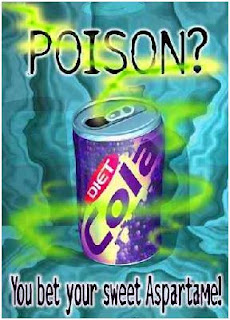Health. It's something most of us have but take for granted. We treat our bodies like trash and then wonder why it's not functioning at optimal levels. I've been guilty of this especially when it comes to eating or drinking. I know that large quantities of decadent food isn't good for my body, but it tastes so good! And drinking, well, you can't just have one glass of wine at dinner right? Hey, at least I don't smoke. I find it repulsive and the smell disgusting.
Recently, the federal government said that cigarette warnings are going to get bigger and bolder. Remember the television ad where the woman speaks through a hole in her throat using a machine? Yeah, this is similar but more shocking. I think it's good. People need to know the dangers of smoking and even if they don't care, at least the shock factor might deter new smokers from taking up the cancerous habit. The proposed graphic warning labels got me to thinking of other hazardous to your health items Americans ingest on a daily basis. Would adding visual depictions of the potential consequences of exposing one's body to various products help consumers make healthier decisions?
For example: How about sugary, calorie wasting sodas? Did you know there are no health benefits to drinking soda? And if you think drinking diet soda is better for you, think again. The health risks of diet soda include kidney damage, bone loss, tooth enamel damage and weight gain. You are basically drinking poison when you open up a can of diet soda. It's packed with chemicals and fake sugar. Is that what you want to put in your body or have your child put in theirs? A great graphic warning on sodas should be rotting teeth or a hugely obese person. I know it sounds over the top, but I'm all for it if it prevents people from jeopardizing their health.
Let's talk fast food. Stopping off at a burger joint after work is more convenient and cheaper than going to the grocery store. But the amount of calories you are ingesting in one meal is shocking. Let's take Burger King for example. If you order a Whopper Value meal with a medium Coca Cola and medium fries, the total amount of calories in that single meal is a whopping 1,400! Not to mention the 62 grams of fat and 1,660 mg of sodium.
If you base this off a 2,000 calorie per day plan, that's already 70% of your caloric needs. The 2,000 calorie plan also allows 65 grams of fat, so in this one fatty meal you've basically reached your fat needs. Still hankering for fast food? I stopped eating fast food a long time ago, after reading the "nutritional" value in these meals. Sure, on occasion I might stop by an In-N-Out to get a burger, but I avoid the special sauce and just get it with ketchup and mustard.
I'm not saying you should deprive yourself of burgers and fries, but give your body a break and eat it in moderation. Having nutritional info at fast food joints really helped me avoid them. I think it should be available at all restaurants. We tend to eat more when we dine out, and that's when the pounds sneak on.
Although new FDA guidelines call for more visible posting of nutritional information in restaurants, is that 4-digit caloric total enough to get people to step away from the Big Mac Supersize meal? A good graphic warning on fast food products might be an extremely obese person stuck in bed unable to get out. Yeah, it's harsh, but what is it going to take for people to wake up and see the consequences of their bad eating habits?
Avoiding fast food can save more than just your health. It saves money in the long run. Think about it. You can go to the grocery store, buy vegetables, lean meats, fruits and some carbohydrates and end up spending about $50 a week. $50 week can last ten meals at home. Essentially, you are spending only $5 a meal if you eat at home. A Whopper Value meal is around $5--but if you are eating that twice a day, then you already spent $10 on two meals. And don't forget you're also killing your health.
What are some other warning labels you think should be implemented? Have you ever stopped a bad habit due to any warnings?resource: www.savings.com/
